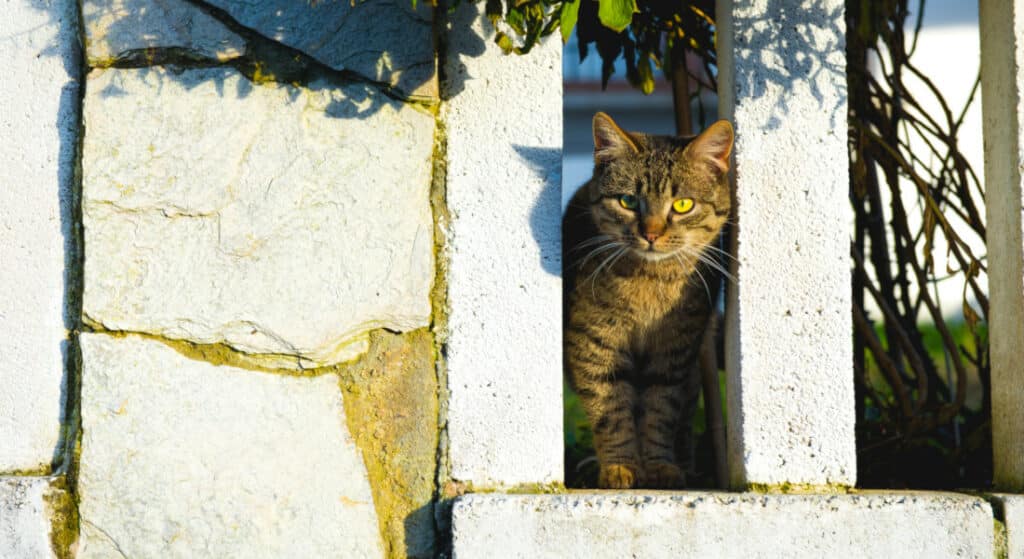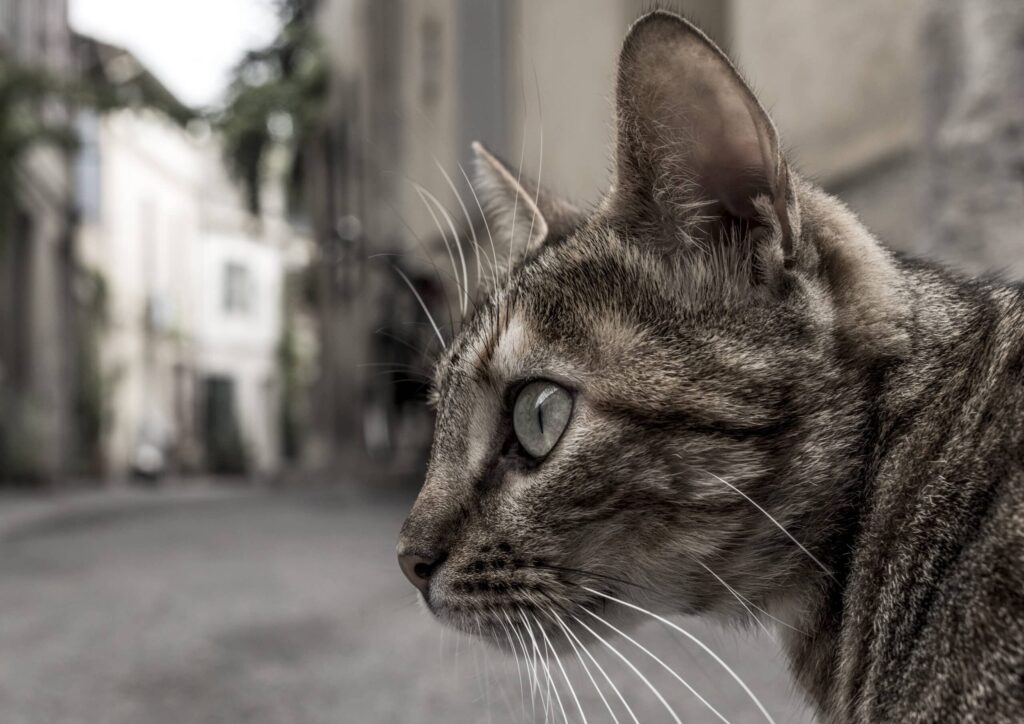
How to Stop a Cat from Pooping in Your Yard
Does your garden serve as a communal latrine for the neighborhood felines? In this article, we’ll look at tactics you can use to stop a cat from pooping in your yard.
Tired of finding unwelcome feline surprises in your garden? When neighborhood cats decide to use your outdoor space as their litter box, it’s frustrating and unsightly.
Fortunately, there are humane and practical strategies that deter an unwelcome kittie and preserve the sanctity of your garden paradise. This article explores proven methods that stop the neighborhood cats in their tracks, from natural repellents to motion-activated devices.
Say goodbye to garden woes and reclaim your outdoor haven with these practical solutions designed to keep your plants flourishing and your patience intact.
Repellents
Commercial cat repellent sprays or granules are available and can be applied in your garden. They usually contain scents that cats dislike. Enquire at your local garden center or hardware store.
You might also try natural repellents like citrus peels, coffee grounds, or cayenne pepper sprinkled around your garden. As cats don’t like the scent given off by these items, they will often avoid areas that contain them.
Water
Cats don’t like being startled and hate water. Automated water-spraying devices that activate when motion is detected can work well.
Fence
A cat-proof fence is designed to deny access to a cat by stopping it from climbing over, squeezing through, or digging under.
Plants
Ask your local garden center about plants known to give off scents that cats don’t like. Planting a few of these may be enough.
Physical Barriers
Create physical barriers that make it difficult for cats to enter your garden. This might include adding fences, chicken wire, or prickly plants like roses.
You can also experiment with upside-down carpet runners in your garden. This results in the pointy side facing up, and most cats dislike walking on them.
Motion Activation
Install motion-activated sprinklers or noise-making devices in your garden. When a cat enters a protected area, these devices startle it and discourage it from returning.
There are sensor-based ultrasonic devices that emit a high-pitched sound cats find unpleasant but we can’t hear. These have the added advantage of deterring other pests.
Cats are intelligent creatures, and especially determined felines may figure out how to pick their way around such devices.
If you plan to invest in this type of technology, it pays to ensure you can move the sensors and/or deterrent devices around. That way, you can experiment and refine your defenses as you attempt to outsmart especially determined felines!
Plants
Plants such as Coleus Canina and “Scaredy Cat” have an odor that cats find unpleasant. Positioning these in strategic points throughout your garden may help deter feline invaders.
Your local garden center can advise on potential plants in your geographic location that might serve this purpose.
Provide a Litter Box
A cat often chooses a particular garden because they feel it’s a suitable place to relieve themselves. Their criteria for a suitable bathroom don’t necessarily align with ours, and determining why your garden is deemed the perfect spot for feline relief can be challenging.
Rather than attempt to fight the inevitable, some people provide a designated cat-friendly area in their yard. This is typically a private area, hidden from all sides, that contains sand or loose soil.
Keep it Tidy
Some cats stop visiting a previously used toilet spot if their feces have been removed. Remove or bury cat waste as soon as you find it, and keep your garden pristine.
Cats are attracted to hidden spaces to explore and for privacy while defecating. Keeping your garden tidy, open, and free of debris will likely reduce its attractiveness to felines seeking a suitable bathroom.
Talk to the Owner
If you know the cat’s owner, have a friendly conversation with them. They might not be aware that their cat is causing issues in your garden and may be willing to help you take steps to prevent it.
For example, they may agree to keep the cat inside or contribute towards the cost of deterrents such as a cat-proof fence.
If you don’t know the owner, print out CatInfo.net’s paper collar and use it to ask the owner to contact you.

A Cat-Proof Fence
Consider investing in a cat-proof fence if the problem continues or is especially severe.
A cat-proof fence is a specially designed barrier with curved tops, overhangs, or extensions that make it difficult for cats to climb or jump over. The fence may also have fine mesh or solid panels that prevent cats from squeezing through or digging underneath.
Contact a local fencing company or garden supply store and ask about customizable solutions based on your specific needs. Some pet supply stores and online retailers offer cat-proof fencing kits for DIY enthusiasts.
Stop a Cat from Pooping in Your Yard
Stopping a cat from relieving itself in your yard can be a challenge. Finding the most effective method for your situation may take time and patience.
The cats’ owners may not even be aware of the problem their cats are causing. It’s worth consulting with them to see if they have suggestions.
Above all, it’s essential that you be a good neighbor and ensure your chosen method is humane and doesn’t cause harm to felines that are merely obeying the call of nature.












